 Sable Island Pony
Sable Island Pony
 The first horses on Sable Island, off the coast of Nova
Scotia, Canada were brought to the island during the late 1700s. Many people
believe that they arrived on the island from many shipwrecks. However, this
romantic notion is false - they were in fact intentionally left on Sable to
graze and multiply, and were most likely seized from Acadians during their
expulsion from Nova Scotia at the hands of the British. Although often referred
to as ponies due to their small size, they have a horse phenotype. One of the
first horses on the island for which there was a record of importation was the
stallion, Jolly, who was taken there in 1801. Their ancestry is unknown, but
they are related in some way to Spanish horses.
The first horses on Sable Island, off the coast of Nova
Scotia, Canada were brought to the island during the late 1700s. Many people
believe that they arrived on the island from many shipwrecks. However, this
romantic notion is false - they were in fact intentionally left on Sable to
graze and multiply, and were most likely seized from Acadians during their
expulsion from Nova Scotia at the hands of the British. Although often referred
to as ponies due to their small size, they have a horse phenotype. One of the
first horses on the island for which there was a record of importation was the
stallion, Jolly, who was taken there in 1801. Their ancestry is unknown, but
they are related in some way to Spanish horses.
The hor ...

 Salernitano
Salernitano
 The true Salernitano
horse originated from the plain lying between the Sele and the Calore (Salerno -
Campania). But, as well as this breed, another type was also raised, which came
to be known as the “razza governativa di Persano” (the ruling breed of Persano).
The true Salernitano
horse originated from the plain lying between the Sele and the Calore (Salerno -
Campania). But, as well as this breed, another type was also raised, which came
to be known as the “razza governativa di Persano” (the ruling breed of Persano).
Established in 1762 by the Bourbon king, Charles III, it was the result of crossing mares of largely eastern origin with Andalusian Arab stallions In 1874 the government sought to suppress the breed and all examples of it were sold at public auction. But in 1900 it was re-established, using mares with a good combination of characteristics and proven to be good for riding. These were selected from various cavalry regiments and mated with two stallions: Jubile ...

 Salerno
Salerno
 The Salerno, or Salernitano,
horse is a saddle-horse, originally from the plains of Battipaglia, Eboli and Paestum,
in the province of Salerno (Campania). It is a very ancient breed, which was improved
during the period of Spanish domination by crossing it with Andalusian and Oriental
horses. It has also been used to improve Russian breeding stock. The Salernitano
horse was once used by the army. In the second half of the nineteenth century it
was crossed with pure-bred English horses, which changed its original appearance.
It was chosen to help produce special Italian cross-breeds, such as Posillipo, Merano
and Fiorello, winners at the Olympics between the years 1956 and 1972.
The Salerno, or Salernitano,
horse is a saddle-horse, originally from the plains of Battipaglia, Eboli and Paestum,
in the province of Salerno (Campania). It is a very ancient breed, which was improved
during the period of Spanish domination by crossing it with Andalusian and Oriental
horses. It has also been used to improve Russian breeding stock. The Salernitano
horse was once used by the army. In the second half of the nineteenth century it
was crossed with pure-bred English horses, which changed its original appearance.
It was chosen to help produce special Italian cross-breeds, such as Posillipo, Merano
and Fiorello, winners at the Olympics between the years 1956 and 1972.This is a horse for riding, very popular in ...

 Samolaco
Samolaco
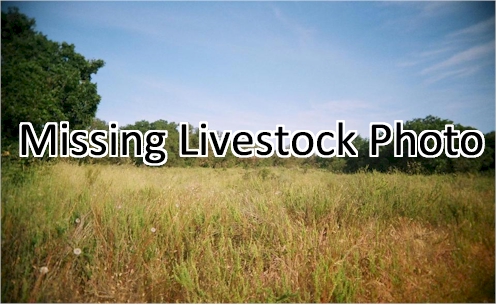 Samolaco are a rare breed of horse originating from
Valchiavenna and Valtellina, in Lombardy, northern Italy. They get their name
from the town of Samolaco, near Chiavenna in the province of Sondrio. They are
gravely endangered; however, they are not among the fifteen indigenous horse
"breeds of limited distribution" recognized by the AIA, the Italian
breeders'' association. The population is listed in DAD-IS as over 12 in 1994,
and under 100 in 1998; one further example of the breed may have been
identified during a television broadcast.
Samolaco are a rare breed of horse originating from
Valchiavenna and Valtellina, in Lombardy, northern Italy. They get their name
from the town of Samolaco, near Chiavenna in the province of Sondrio. They are
gravely endangered; however, they are not among the fifteen indigenous horse
"breeds of limited distribution" recognized by the AIA, the Italian
breeders'' association. The population is listed in DAD-IS as over 12 in 1994,
and under 100 in 1998; one further example of the breed may have been
identified during a television broadcast.
Samolaco horses are thought to originate from crossing between indigenous horses and Spanish horses abandoned in about the 17th century by the garrisons of Spanish fortifications i ...

 Sandalwood
Sandalwood
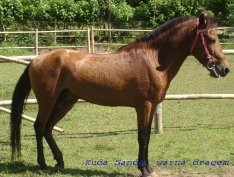 Sandalwood Ponies originated in Indonesia, on the Sumba and
Sumbawa Islands. They are named after the Sandalwood trees, which are a major
export of the country. Sandalwood ponies are one of the finest in the country,
partly due to the great amount of Arabian blood. They are very nice children''s
ponies. Sandalwood Ponies have been exported to Australia and other Southeast
Asian countries for use as racing ponies. They have been crossed with
Thoroughbred blood and are used in racing on Cambodian and Thai racing tracks.
Sandalwood Ponies originated in Indonesia, on the Sumba and
Sumbawa Islands. They are named after the Sandalwood trees, which are a major
export of the country. Sandalwood ponies are one of the finest in the country,
partly due to the great amount of Arabian blood. They are very nice children''s
ponies. Sandalwood Ponies have been exported to Australia and other Southeast
Asian countries for use as racing ponies. They have been crossed with
Thoroughbred blood and are used in racing on Cambodian and Thai racing tracks.
Sandalwoods have incredible endurance. They are very easy to manage. Generally they have a nice head, small ears, a short, muscular neck, and a deep chest with a sloping shoulder. Their back is usually long ...

 Sanfratellano dei Nebrodi
Sanfratellano dei Nebrodi
 The Sanfratellano
dei Nebrodi, or San Fratello, horse is an Italian breed originating in Messina (Sicily).
The Sanfratellano
dei Nebrodi, or San Fratello, horse is an Italian breed originating in Messina (Sicily).The account of its origins is of great historical and sociological interest. It was not a “padronal breed”, raised by a noble or baronial family enjoying ascendancy during a certain historical period, but rather a population of horses connected to the people and history of a particular part of Sicily. Today, as 1000 years ago, the Sanfratellano di Nebrodi horse lives free and well-protected in its “cradle of origin”, a Natural Park extending for 87,00 hectares and containing 21 inhabited communes. The breed is the subject of “studies and research”, undertaken, in particular, by the “Istituto Sperimentale Zootechnico ...

 Sanhe
Sanhe
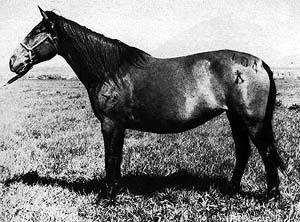 Sanhe means three rivers in Chinese. Where these three
rivers meet is some of the best forage or grassland in all of China. Sanhe
horses are found in the northeast of the Inner Mongolia Autonomous Region and
are used mainly for riding and pulling loads or carting. They are considered
the most developed of the Chinese horse breeds.
Sanhe means three rivers in Chinese. Where these three
rivers meet is some of the best forage or grassland in all of China. Sanhe
horses are found in the northeast of the Inner Mongolia Autonomous Region and
are used mainly for riding and pulling loads or carting. They are considered
the most developed of the Chinese horse breeds.
During the Liao dynasty, about 1000 AD, the region was known for the quality of its horses, some of which were sent to the emperors by nomadic tribes. During the Qing dynasty seven hundred years later, the Soulun breed was bred in this area. The Soulun were famous for their appearance and performance under a saddle. These horses were used as cavalry horses against invaders.

 Sarcidano
Sarcidano
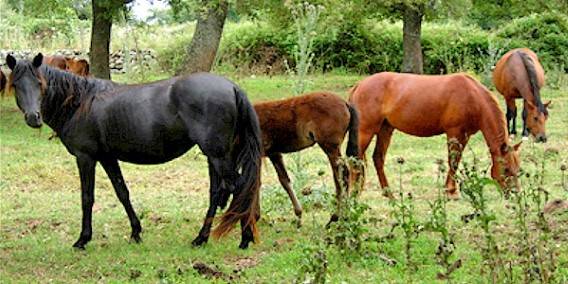 Sarcidano Horses ( orCavallo del Sarcidano) are a rare breed
of semi-feral horse originating from the Altopiano del Sarcidano ("plateau
of Sarcidano") in the commune of Laconi in the Oristano province of
Sardinia, Italy. They are one of the fifteen indigenous horse "breeds of
limited distribution" recognized by the AIA, the Italian breeders''
association. Although they should never exceed 148 cm (14.2 hands) at the
withers, they are officially considered a cavallo or horse, and not a pony.
Sarcidano Horses ( orCavallo del Sarcidano) are a rare breed
of semi-feral horse originating from the Altopiano del Sarcidano ("plateau
of Sarcidano") in the commune of Laconi in the Oristano province of
Sardinia, Italy. They are one of the fifteen indigenous horse "breeds of
limited distribution" recognized by the AIA, the Italian breeders''
association. Although they should never exceed 148 cm (14.2 hands) at the
withers, they are officially considered a cavallo or horse, and not a pony.
No use of the Sarcidano horse is documented. In 2001 the possibility of starting a few horses for use in trekking were considered.
Sarcidano horses appear to have ancient Spanish ancestry in common with the Andalusi ...

 Schleswig
Schleswig
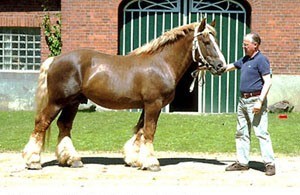 Schleswig (also known as Schleswiger Heavy Draft, or Schleswiger
Kaltblut) horses are from the Duchy of Schleswig, Germany. They are thought to
be the origin of the Schleseiger Draft Horse along with the Jutland Heavy Draft
Horse. Although not a certainty, the Schleswiger Heavy Draft''s ancestors not
only worked in agriculture tilling and pulling, but the Schleswigers probably
descended from the large war horses of the Middle Ages.
Schleswig (also known as Schleswiger Heavy Draft, or Schleswiger
Kaltblut) horses are from the Duchy of Schleswig, Germany. They are thought to
be the origin of the Schleseiger Draft Horse along with the Jutland Heavy Draft
Horse. Although not a certainty, the Schleswiger Heavy Draft''s ancestors not
only worked in agriculture tilling and pulling, but the Schleswigers probably
descended from the large war horses of the Middle Ages.
In 1860 an imported English stallion, Oppenheim LXII, either a pure-bred or a part-bred Suffolk Punch, was introduced, and became the foundation stallion of the breed. In 1888 the breeding of warmbloods and coldbloods was separated, and in 1891 various associations of coldblood breeders in Sc ...

 Schwarzwaelder Fuchs
Schwarzwaelder Fuchs
 See Black Forest Horse.
See Black Forest Horse.

 Sella Italiano
Sella Italiano
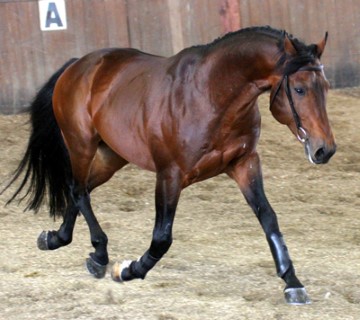 Sella Italiano horses were developed in Italy. The Italian
Government has passed a law that created a stud book for the new breed. The
breed is blending the remnant indigenous Italian breeds of Maremmano,
Salernitano, and Persano horses with Anglo Arabo Sardo, Purosangue Orientale,
Arabian and Thoroughbreds. The progeny of said horses can be registered as
Sella Italiano if they can pass a “performance test”. Furthermore, the stud
book is open to other European warmbloods if they can pass the performance test
and be approved by the breed registry. They are intended to produce a sport
horse which can compete successfully at the international level.
Sella Italiano horses were developed in Italy. The Italian
Government has passed a law that created a stud book for the new breed. The
breed is blending the remnant indigenous Italian breeds of Maremmano,
Salernitano, and Persano horses with Anglo Arabo Sardo, Purosangue Orientale,
Arabian and Thoroughbreds. The progeny of said horses can be registered as
Sella Italiano if they can pass a “performance test”. Furthermore, the stud
book is open to other European warmbloods if they can pass the performance test
and be approved by the breed registry. They are intended to produce a sport
horse which can compete successfully at the international level.Their minimum height at the withers is set at 156 centimetres (15.1 hands; 61 i ...

 Selle Francais
Selle Francais
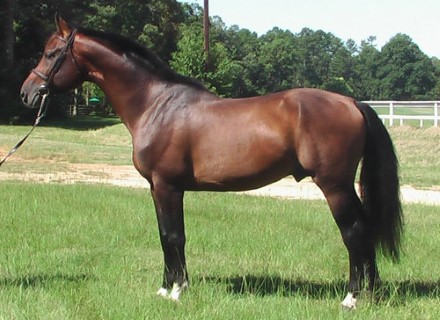 Selle Francais horses comes from France, where they are popular
as a racing horse and have an incredible ability for high jumping. One in
particular, the Selle Francais Baloubet De Rouet, was the winner of three World
Show Jumping Championships. Over time they have been cross-bred Norfolk Trotters
and English Thoroughbreds. Anglo Norman horses and French Trotters were the
result of all some of the breeding. Over time various styles of the Selle
Francais horse have been developed for drafting and also for riding. A specific
horse named Orange Peel was placed into the blood lines to increase the riding
abilities.
Selle Francais horses comes from France, where they are popular
as a racing horse and have an incredible ability for high jumping. One in
particular, the Selle Francais Baloubet De Rouet, was the winner of three World
Show Jumping Championships. Over time they have been cross-bred Norfolk Trotters
and English Thoroughbreds. Anglo Norman horses and French Trotters were the
result of all some of the breeding. Over time various styles of the Selle
Francais horse have been developed for drafting and also for riding. A specific
horse named Orange Peel was placed into the blood lines to increase the riding
abilities.
Selle Francais orses are full of energy and extremely smart. They are also considered to perform at a ...

 Senner
Senner
 Senner, or Senne, horses are a critically-endangered German
riding horse. They are believed to be the oldest saddle-horse breed in Germany,
and are documented at least as far back as 1160. They are named for the Senne,
a natural region of dunes and moorland in Nordrhein-Westfalen, in western
Germany, and live in feral herds there and in the Teutoburger Forest to the
east.
Senner, or Senne, horses are a critically-endangered German
riding horse. They are believed to be the oldest saddle-horse breed in Germany,
and are documented at least as far back as 1160. They are named for the Senne,
a natural region of dunes and moorland in Nordrhein-Westfalen, in western
Germany, and live in feral herds there and in the Teutoburger Forest to the
east.
Senner horses were bred principally as a riding horse, even in times when working horses were in demand; they were also used as a carriage horse. Senner stallions stood at the royal stud of Weil bei Esslingen in Baden-Württemberg and at the state stud of Lipizza in the Austrian Empire. Today, they are competition or recreational riding.

 Shagya Arabian
Shagya Arabian
 Shagya Arabian horses were developed in the Austro-Hungarian
Empire during the 19th century at the Bábolna, Mezohegyes, Radautz, Piber, and
Topolcianky stud ranches. Today can be found in Slovenia, Austria, Croatia,
Serbia, Romania, Poland, and Czech Republic.
Shagya Arabian horses were developed in the Austro-Hungarian
Empire during the 19th century at the Bábolna, Mezohegyes, Radautz, Piber, and
Topolcianky stud ranches. Today can be found in Slovenia, Austria, Croatia,
Serbia, Romania, Poland, and Czech Republic.
Shagya Arab horses originated in Hungary and were developed to create a much taller and sleeker version of the traditional Arab styles. One of the major founding sires was Shagya (hence the breed’s name), a gray Arabian (or perhaps part-Arabian) stallion with some ancestors of the Kehilan and Siglavy strains. Born in Syria in 1810, he was taller than the average Arabian of the time, standing 15.2 1/2 hands (62.5 inches, 159 cm) at the withers.
Shagya w ...

 Shetland Pony
Shetland Pony
 Shetland Ponies are the smallest of the British breeds, and unlike
other pony breeds, do not increase in height when bred on more favorable land and
in a milder climate.
Shetland Ponies are the smallest of the British breeds, and unlike
other pony breeds, do not increase in height when bred on more favorable land and
in a milder climate.The early 1800s saw a demand for this breed from outside the Shetland Islands (Scotland) where it developed initially this was mainly for circus animals and children’s ponies. However, with the abolition of child labor in the coal mines demand grew even further and large numbers of ponies were sent to England for the mines. Buyers from the US had also become interested in the breed and large consignments were shipped across the Atlantic.
In 1822 it was estimated there were 10,000 ponies on the Shetland Islands but by the 1890s this figure was d ...

 Shire
Shire
 Shire Horses are the largest – and among the oldest – of the
British horse breeds. Among its ancestors were the chariot horses of the Britons
– described and admired greatly by Julius Caesar two thousand years ago.
Shire Horses are the largest – and among the oldest – of the
British horse breeds. Among its ancestors were the chariot horses of the Britons
– described and admired greatly by Julius Caesar two thousand years ago.For centuries its primary role was as a War Horse (its original name). It has also been known as the Great Horse and the Strong Horse.
Strengthened by crossing with horses imported from Europe (e.g. Friesian Horeses), the breed was steadily increased in size and strength as the chain mail and then plate armor of its riders increased in heaviness. This attained its greatest weight in the reign of Henry VIII. An Elizabethan writer estimated that the average Great Horse could carry up to four hundredweig ...

 Sicilian
Sicilian
 Hailing from eastern Sicily, the Sicilian horse might not be a "purebred" in the strictest sense, but its beauty and diversity are undeniable. Experts debate its purity, highlighting its clear oriental influences, particularly evident in the eastern part of the island where horses boast lighter builds and longer bodies. The interior regions, however, showcase a more muscular physique, sometimes exhibiting irregularities.
Hailing from eastern Sicily, the Sicilian horse might not be a "purebred" in the strictest sense, but its beauty and diversity are undeniable. Experts debate its purity, highlighting its clear oriental influences, particularly evident in the eastern part of the island where horses boast lighter builds and longer bodies. The interior regions, however, showcase a more muscular physique, sometimes exhibiting irregularities.
While captivating to behold, the Sicilian horse has always been a working animal. Throughout history, it served as a trusted companion for riders exploring the countryside, even leaping over jumps with agility. Its strength and tenacity made it a valuable asset for pulling carriages and assisting with farm tasks. ...

 Silesian
Silesian
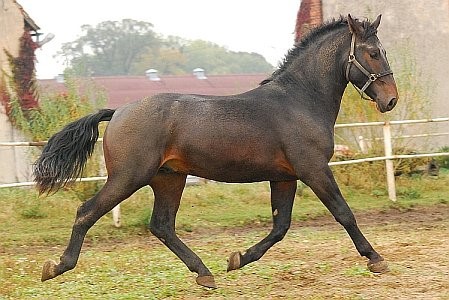 Silesian (or Kon slaski, or Slunski kun) horses are warmblooded
horses from the area of historic Silesia, which lies mostly within modern
Poland. They are the heaviest of the Polish warmblood breeds, and have been
influenced mainly by Thoroughbred and Oldenburg horses, and partly by East
Friesian and German halfbreds. The Oldenburg influence was particularly
pronounced after World War II, when imported stallions were used to keep the
breed from becoming extinct. Two types are recognised in the breed standard, an
old and a new.
Silesian (or Kon slaski, or Slunski kun) horses are warmblooded
horses from the area of historic Silesia, which lies mostly within modern
Poland. They are the heaviest of the Polish warmblood breeds, and have been
influenced mainly by Thoroughbred and Oldenburg horses, and partly by East
Friesian and German halfbreds. The Oldenburg influence was particularly
pronounced after World War II, when imported stallions were used to keep the
breed from becoming extinct. Two types are recognised in the breed standard, an
old and a new. At 3 years old, stallions of the old type stand 160 - 170 centimetres (15.3–16.3 hands) at the withers, mares about 2 cm less; the girth is 190 - 210 cm (75 - 83 in), and the cannon-bone circumference ...

 Single Footing
Single Footing
 Single footing horses come in many varieties, sizes, colors
and coat patterns. They must be of good temperament, willing, have endurance,
easy to train, have good gait, and be smooth at all speeds of gait. They are a
light breed with a solid conformation. They must be able to perform an even
4-beat gait. Some are able to reach speeds of up to 20 mph. At the fastest
speeds these horses will be traveling with one foot on the ground at a time,
thus the name "single-footing." The horse will not have a head nod or
bob. The Single Footers generally travel with head up, "star gazing."
They also tend to round their backs instead of arch them. "Many may
stretch out, lowering their heads at the racing single-foot. The horse may have
other g
...
Single footing horses come in many varieties, sizes, colors
and coat patterns. They must be of good temperament, willing, have endurance,
easy to train, have good gait, and be smooth at all speeds of gait. They are a
light breed with a solid conformation. They must be able to perform an even
4-beat gait. Some are able to reach speeds of up to 20 mph. At the fastest
speeds these horses will be traveling with one foot on the ground at a time,
thus the name "single-footing." The horse will not have a head nod or
bob. The Single Footers generally travel with head up, "star gazing."
They also tend to round their backs instead of arch them. "Many may
stretch out, lowering their heads at the racing single-foot. The horse may have
other g
...

 Skyros Pony
Skyros Pony
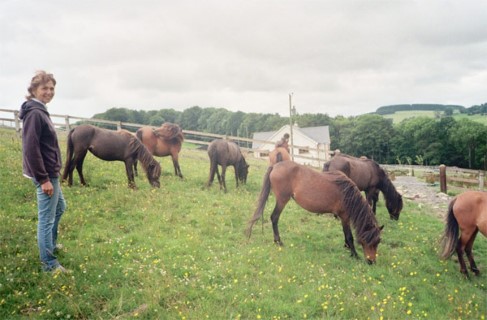 Skyros Ponies are believed to be descended from horses
brought to the island of Skyros during the 5th to 8th centuries BCE by Athenian
colonists. It is possible that they were used by Alexander the Great in his
conquests, and also possible that they are the horses depicted in the friezes
of the Parthenon.
Skyros Ponies are believed to be descended from horses
brought to the island of Skyros during the 5th to 8th centuries BCE by Athenian
colonists. It is possible that they were used by Alexander the Great in his
conquests, and also possible that they are the horses depicted in the friezes
of the Parthenon.
They developed mainly as semi-feral horses in the mountainous area on the southern part of the island, although individuals were caught and tamed by farmers for agricultural uses. The advances in agricultural mechanization during the 1960''s called into question the survival of the breed, as they were no longer needed for farm work and their numbers were already low. The prevalence of feral donkeys in the same area ...

 Slovak Sport Pony
Slovak Sport Pony
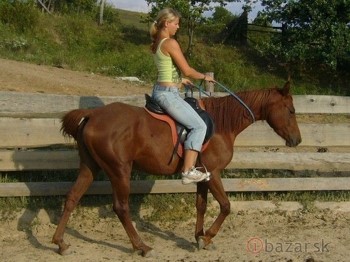 Slovak Sport Ponies are raised in the areas of Vel''ké Pole
and Nitra, Slovakia, and were developed from Thoroughbred, Arabian and Slovak
Warmblood breeds crossed with Welsh and German riding ponies.
Slovak Sport Ponies are raised in the areas of Vel''ké Pole
and Nitra, Slovakia, and were developed from Thoroughbred, Arabian and Slovak
Warmblood breeds crossed with Welsh and German riding ponies.
A genealogical record was established in 1984. They are mainly gray and sometimes black. Adult males and females weigh on average 354 kg and 248 kg with a height at the cross of 143 cm and 140 cm respectively. They are on average 13.3 – 14.2 hands height.

 Sokolsky
Sokolsky
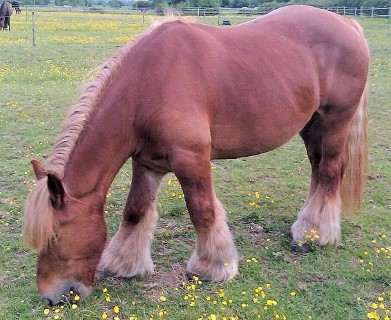 Sokolsky, or Sokolka, horses originated in Poland. They are
used for heavy draft and farm work, and are a tough breed with great stamina.
Sokolsky, or Sokolka, horses originated in Poland. They are
used for heavy draft and farm work, and are a tough breed with great stamina.
Sokolsky horses were developed in the 1900s, and has been heavily influenced by Belgian, Ardennes, Norfolk, Dole/Gudbrandsdal, and Anglo-Norman stock. The result of this breeding is a heavy draft horse that is not excessively large, with stamina, toughness, and good gaits.
Sokolsky horses usually stands between 15 and 16 hands high, and are chestnut or bay. They have a slightly heavy head with a straight profile, set on a long, broad, and muscular neck. Their shoulders are well-formed and sloping, resulting in their good gaits. They tend to have deep chests, pronou ...

 Somali Pony
Somali Pony
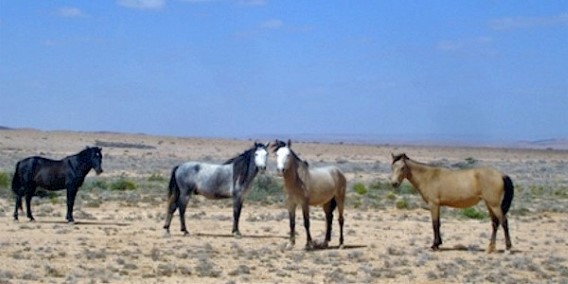 Somali Ponies are from Somalia in East Africa. They are genetically
horses but are considered Ponies because they are pony sized (only 13-13 1/2 hh).
The severe climate and poor food sources, in Somalia, have contributed to their
smaller size. They are bred by most tribes excluding the Esa and Géri. The
Dolbanhanta tribe is the breeder of Somali ponies.
Somali Ponies are from Somalia in East Africa. They are genetically
horses but are considered Ponies because they are pony sized (only 13-13 1/2 hh).
The severe climate and poor food sources, in Somalia, have contributed to their
smaller size. They are bred by most tribes excluding the Esa and Géri. The
Dolbanhanta tribe is the breeder of Somali ponies.
They have heavy heads, short, thick necks, with inharmonious conformations. They are able to carry light weight very well and for long distances. They have extremely hard hooves; some say harder than the Arabian horses. They can gallop and perform better without shoes because of the terrain and the nature of their feet. They can go three days or longer without wa ...

 Sorraia
Sorraia
 Sorraia horses come from Portugal and Spain. They received
their name from where they where originally bred: the Raia and the Sor rivers
that flow between Spain and Portugal. They were initially utilized for herding bulls
all over Iberia. They look similar to Przewalski’s horse or Tarpan horses, and
are often mistaken for them. They are found all along the Iberian Peninsula.
Many experts have taken into account that these Sorraia horses could be
responsible for many other horse breeds, even some bred in North Africa. They
are currently undergoing a preservation project. They can be found in Libson as
well as all along the Atlantic coast of Portugal. There were two variations of
the Sorraia horses that were taken to North America so
...
Sorraia horses come from Portugal and Spain. They received
their name from where they where originally bred: the Raia and the Sor rivers
that flow between Spain and Portugal. They were initially utilized for herding bulls
all over Iberia. They look similar to Przewalski’s horse or Tarpan horses, and
are often mistaken for them. They are found all along the Iberian Peninsula.
Many experts have taken into account that these Sorraia horses could be
responsible for many other horse breeds, even some bred in North Africa. They
are currently undergoing a preservation project. They can be found in Libson as
well as all along the Atlantic coast of Portugal. There were two variations of
the Sorraia horses that were taken to North America so
...

 South German Coldblood
South German Coldblood
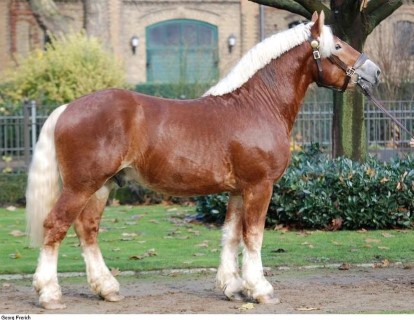 South German coldblood, or Suddeutsches Kaltblut, Horses are
descended from the Austrian Noriker.
South German coldblood, or Suddeutsches Kaltblut, Horses are
descended from the Austrian Noriker.In the end of the 19th century the Noriker was introduced to Bavaria. Holstein and Oldenburg breeds were added to the breeding program in Upper Bavaria. In Lower Bavaria Oldenburg, Cleveland Bay, Clydesdales, and Belgian Draft Horses were used as outcrosses by those breeders. Over time the German breeders used the original Noriker blood to upgrade their breeding program. The South German Horse was first named the Pinzgauer Noriker because it was bred in the region of Salzburg Province of Austria. In time, the German bred breed became known as the South German Heavy Horse.
Mainly bred in Bavaria and Baden Wurte ...

 Soviet Heavy Draft
Soviet Heavy Draft
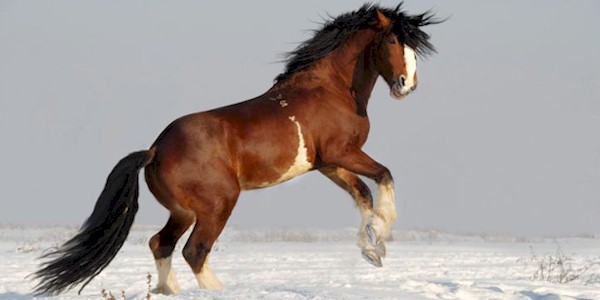 Soviet Heavy Draft horses originated in Russia at the end of
the 19th century and became established by the 1940''s. The need for a strong
but relatively fast draft horse breed was recognized in Russia during the
latter part of the 1800’s . The initial breeding took place at the Khrenov
stud, and from there expanded to the Pochinkozsk stud.
Soviet Heavy Draft horses originated in Russia at the end of
the 19th century and became established by the 1940''s. The need for a strong
but relatively fast draft horse breed was recognized in Russia during the
latter part of the 1800’s . The initial breeding took place at the Khrenov
stud, and from there expanded to the Pochinkozsk stud.They were created by crossing native mares with imported Belgian stallions. The native mares were a mix of Percheron, Ardennes, Suffolk Punch, Danish and various saddle horse breeds.
By 1936, during the Soviet era, three state breeding centres were established: Pochinkovsk, Mordovian and Gavrilovo-Posad. Alexandroz farm in the Vladimir region and Yaroslavl farm branched off ...

 Spanischer Mustang
Spanischer Mustang
 Please see our description of Mustang horses
Please see our description of Mustang horses

 Spanish
Spanish
 The modern day pure Spanish Horse is derived from very ancient
horses whose body shapes are depicted in cave drawings from at least 5000 BC in
both north-eastern and southern regions of Spain. Eventually predominating in the
southern province of Andalucía, they became known as Andalusian horses. However,
the authorities of the Spanish stud book now prefer them to be known as Pura Raza
Española (P.R.E.) or Pure Spanish Horse. There are about 45,000 world-wide.
The modern day pure Spanish Horse is derived from very ancient
horses whose body shapes are depicted in cave drawings from at least 5000 BC in
both north-eastern and southern regions of Spain. Eventually predominating in the
southern province of Andalucía, they became known as Andalusian horses. However,
the authorities of the Spanish stud book now prefer them to be known as Pura Raza
Española (P.R.E.) or Pure Spanish Horse. There are about 45,000 world-wide.Andalusian horses are a very beautiful aristocratic horse, with a lovely arched neck held uprightly on a strong, compact body. The cannons (lower legs) are short and sturdy. It has a long thick mane and tail, and the predominantly grey or bay coat has a natural glistenin ...

 Spanish Barb
Spanish Barb
 Spanish Barb horses originated in America. They are a cross
between Barb and Andalusian horses. They are known to be extremely resilient,
good riders, and possess an immaculate cow sense. Andalusian ancestry has given
them good conformation and responsiveness.
Spanish Barb horses originated in America. They are a cross
between Barb and Andalusian horses. They are known to be extremely resilient,
good riders, and possess an immaculate cow sense. Andalusian ancestry has given
them good conformation and responsiveness.
They average in the range of 13.3 to 15 hands high. They are found in bay, dark bay, and black, with grays appearing because of Andalusian influence. Their head is narrow and refined with a convex profile, their neck is arched and their withers pronounced. Their thick body is indicative of its staying power, although they have thin legs, that are not. Overall, they are an elegant mix of the Andalusian and Barb horses.
In recent years t ...

 Spanish Jennet
Spanish Jennet
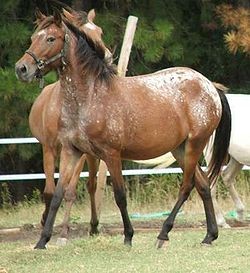 The original Spanish Jennet was a type of horse more than a
distinct breed, and became extinct. However there have been effort to recreate
a colored variety of gaited horse that resembles the historical Jennet or
"Spanish Jennet."
The original Spanish Jennet was a type of horse more than a
distinct breed, and became extinct. However there have been effort to recreate
a colored variety of gaited horse that resembles the historical Jennet or
"Spanish Jennet."
The Jennet was a smooth-gaited type of horse popular in the Middle Ages, known for their presence, style and smooth ride. They were often ridden by European nobility. Some early Jennets sported pinto or leopard patterns.
Most of the Medieval horses bred during the 1500''s in Spain and elsewhere were not "breeds" in the modern sense of the word. The Jennet from Spain became more uniform in type due to a single geographical region producing them as well as generations o ...

 Spanish-Norman
Spanish-Norman
 Spanish-Norman horses are considered to be an exclusive and
rare breed. Genetically Spanish-Norman horses are a blending of Andalusian and
Percheron horses. They are suited for many disciplines including fighting. They
were used on the battlefields in Europe by noblemen.
Spanish-Norman horses are considered to be an exclusive and
rare breed. Genetically Spanish-Norman horses are a blending of Andalusian and
Percheron horses. They are suited for many disciplines including fighting. They
were used on the battlefields in Europe by noblemen. In 1991 the Spanish-Norman Horse Registry was created to record the pedigrees of this special breed. The Registry was started by Allan and Linda Osterman Hamid of Hamid Hill Farm, Ltd., Woodbury, Connecticut.
They stand between 15.5hh and 17 hands. Their colors include gray, bay, and black. They are an extremely athletic breed, are calm, docile, intelligent, easy to train, willing, have long arched necks, short backs, solid shoulders, powerful hi ...

 Spiti Pony
Spiti Pony
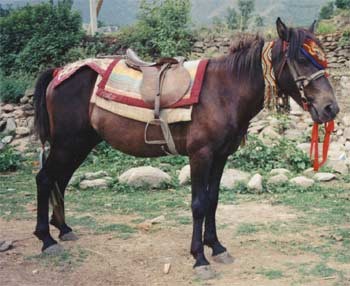 Spiti Ponies (also known as Chamurthi Ponies) are a gaited
pony from India. They are indigenous to the Pin Valley which is found in a
Buddhist tribal district called Spiti.
Spiti Ponies (also known as Chamurthi Ponies) are a gaited
pony from India. They are indigenous to the Pin Valley which is found in a
Buddhist tribal district called Spiti.
Spiti is a unique and isolated area located in the state of Himachal Pradesh in north-western India, a high altitude desert which is closed off from the rest of the country for 6 months of the year by snow on the high passes which access this region. To the east lies Tibet, in the west is another remote district often linked with Spiti, called Lahaul, to the north is the famous high altitude area known as Ladakh, and to the south lie the foothills of the Himalayas. Once the high passes are crossed, you enter a completely different landscape. The ...

 Sport Pony
Sport Pony
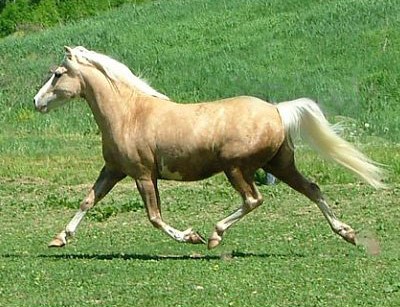 Sport ponies have been enjoyed for hundreds of years in
Europe and their stock gradually made it’s way to North America.
Sport ponies have been enjoyed for hundreds of years in
Europe and their stock gradually made it’s way to North America.Through the years, American’s started their own breeding programs to further enhance and promote them. In 1981 a North American Sport Pony Registry was initially founded as a division of the American Warmblood Registry. However by 1997 the number and quality of the ponies being produced in America was large enough to warrant their own separate registry.
American Sport Ponies are notable because they look and move like small horses and do not have physical pony traits. They are a type breed and their registry will accept a number of bloodlines as long as they meet the general requirements.

 Spotted Saddle
Spotted Saddle
 Spotted Saddle are light riding horses from the United
States. They were developed from small gaited pinto ponies of Spanish ancestry.
These were crossed with larger American breeds such as the Morgan and
Standardbred, developed after the American Revolution, to increase size while
retaining coloration and the desired gait. After the American Civil War,
additional gaited blood was added, with contributing breeds including the
Tennessee Walking Horse, Missouri Fox Trotter, Paso Fino, and Peruvian Paso.
Mustangs from the American West were also incorporated. Originally developed in
central Tennessee, and selectively bred for pinto coloration, they were used
for general pleasure and trail riding. The result is a colorful, smooth-gaite
...
Spotted Saddle are light riding horses from the United
States. They were developed from small gaited pinto ponies of Spanish ancestry.
These were crossed with larger American breeds such as the Morgan and
Standardbred, developed after the American Revolution, to increase size while
retaining coloration and the desired gait. After the American Civil War,
additional gaited blood was added, with contributing breeds including the
Tennessee Walking Horse, Missouri Fox Trotter, Paso Fino, and Peruvian Paso.
Mustangs from the American West were also incorporated. Originally developed in
central Tennessee, and selectively bred for pinto coloration, they were used
for general pleasure and trail riding. The result is a colorful, smooth-gaite
...

 Spotted Saddle
Spotted Saddle
 Spotted Saddle are light riding horses from the United
States. They were developed from small gaited pinto ponies of Spanish ancestry.
These were crossed with larger American breeds such as the Morgan and
Standardbred, developed after the American Revolution, to increase size while
retaining coloration and the desired gait. After the American Civil War,
additional gaited blood was added, with contributing breeds including the
Tennessee Walking Horse, Missouri Fox Trotter, Paso Fino, and Peruvian Paso.
Mustangs from the American West were also incorporated. Originally developed in
central Tennessee, and selectively bred for pinto coloration, they were used
for general pleasure and trail riding. The result is a colorful, smooth-gaite
...
Spotted Saddle are light riding horses from the United
States. They were developed from small gaited pinto ponies of Spanish ancestry.
These were crossed with larger American breeds such as the Morgan and
Standardbred, developed after the American Revolution, to increase size while
retaining coloration and the desired gait. After the American Civil War,
additional gaited blood was added, with contributing breeds including the
Tennessee Walking Horse, Missouri Fox Trotter, Paso Fino, and Peruvian Paso.
Mustangs from the American West were also incorporated. Originally developed in
central Tennessee, and selectively bred for pinto coloration, they were used
for general pleasure and trail riding. The result is a colorful, smooth-gaite
...

 Suffolk Punch
Suffolk Punch
 Suffolk Punch horses have a long and well-established history
as a draught animal of English origin. Arthur Young, one of the earliest writers
on British livestock, and who himself came from Suffolk, was the first to refer,
in 1771, to the area’s ''noble breed of horfes'', as a distinct breed. He noted that
even in his childhood (he was born in 1741) the Suffolk was referred to as ‘The
Old Breed.’ It is almost certainly the oldest existing pure breed of draught horse
to have originated in England.
Suffolk Punch horses have a long and well-established history
as a draught animal of English origin. Arthur Young, one of the earliest writers
on British livestock, and who himself came from Suffolk, was the first to refer,
in 1771, to the area’s ''noble breed of horfes'', as a distinct breed. He noted that
even in his childhood (he was born in 1741) the Suffolk was referred to as ‘The
Old Breed.’ It is almost certainly the oldest existing pure breed of draught horse
to have originated in England.William Youatt in 1837, and David Low in 1845, both equally renowned as recorders of early livestock in Britain, also wrote enthusiastically of the Suffolk, noting its distinctive ''stout or punchy form'', with large head and de ...

 Swedish Ardennes
Swedish Ardennes
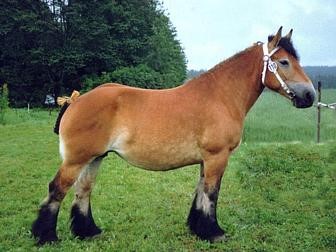 Swedish Ardennes horses were developed in Sweden when the
Count C.G. Wrangle brought large Ardennes horses to the country in 1872. By
1880 most parts of south and central Sweden had imported or crossed Ardennes.
These heavier horses were bred with the horse of the Swedish countryside. The
resulting horse was very mobile and marked by longevity. So successful was the
breeding effort that a stud book was opened in 1901.
Swedish Ardennes horses were developed in Sweden when the
Count C.G. Wrangle brought large Ardennes horses to the country in 1872. By
1880 most parts of south and central Sweden had imported or crossed Ardennes.
These heavier horses were bred with the horse of the Swedish countryside. The
resulting horse was very mobile and marked by longevity. So successful was the
breeding effort that a stud book was opened in 1901.
For years, the wild horse population of Sweden was indiscriminately crossed with other imported breeds. Even when studs began focusing their breeding efforts, however, horses were chosen more for their outer looks than well examined conformation standards. By 1874, this had all changed and examinations wer ...

 Swedish Warmblood
Swedish Warmblood
 Swedish Warmblood horses were developed at Stromsholm and
Flyinge. They are descended from imported stock in the 17th century from
Denmark, Germany, England, Hungary, France, Russia, Spain, and Turkey. These
horses were extraordinarily varied, but along the way became the Swedish
Warmblood.
Swedish Warmblood horses were developed at Stromsholm and
Flyinge. They are descended from imported stock in the 17th century from
Denmark, Germany, England, Hungary, France, Russia, Spain, and Turkey. These
horses were extraordinarily varied, but along the way became the Swedish
Warmblood.The decade from 1920 to 1930 was an important decade in the development of the breed. The three most noticeable influences on the breed were Tribun, Hamlet, and Thoroughbred Hamplemann, all Hanoverians Schwabliso. After 1945, the Trakehners Heristal, Heinfried, Anno, and Polarstern had a dominant effect upon the breed. Heristal was a descendant of the great English racehorse Hyperion. He produced 15 stallions and 44 mares that were entere ...
